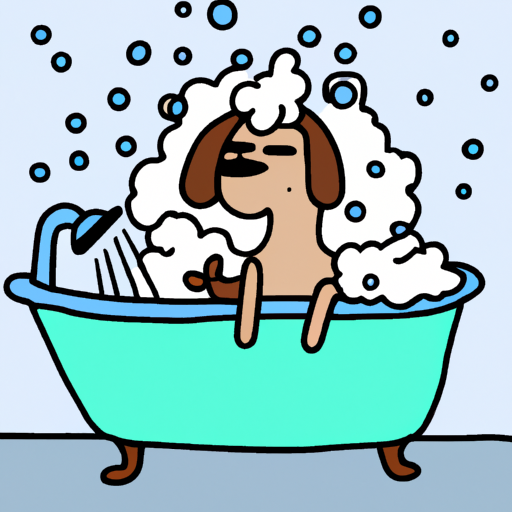When your four-legged friend starts scratching excessively, leaving a flurry of white flakes on their bed or your carpet, it’s clear – your dog is dealing with dandruff. Dandruff in dogs is not just a cosmetic concern, it can indicate underlying health issues that need to be addressed. Learn how to tackle this common issue head-on with proper grooming, diet changes, and a little TLC.
Table of Contents
1. Understanding Canine Dandruff
2. Causes of Dandruff in Dogs
3. How to Treat Dog Dandruff
4. Preventing Dandruff in Dogs
5. Frequently Asked Questions
Key Takeaways
* Dandruff in dogs can be a symptom of underlying health issues.
* Proper grooming and diet can significantly decrease dandruff.
* Consult with your vet if dandruff persists, as it could be a sign of a more serious condition.
Understanding Canine Dandruff
Just like in humans, dandruff in dogs is characterized by dry, flaky skin. It’s typically more noticeable in dogs with darker fur. While it’s normal for a dog to have some skin flakes, excessive flaking and itchiness could indicate a problem. Understanding the causes of dandruff in dogs is the first step in managing it.
Causes of Dandruff in Dogs
There are several potential causes of dandruff in dogs, from environmental factors to underlying health conditions.
Environmental Factors
Dry air, especially during winter months, can lead to dry skin and dandruff. Similarly, exposure to harsh shampoos or grooming products can also cause skin irritation and flaking.
Diet
A poor diet lacking in essential fatty acids can also lead to dry skin and dandruff. Dogs need a balanced diet to maintain healthy skin and coat. Check out this article for more information on dog nutrition.
Health Conditions
Dandruff can be a symptom of several health conditions, including seborrhea, allergies, or parasites. If your dog’s dandruff persists despite your best efforts, it’s time to consult a vet.
How to Treat Dog Dandruff
Luckily, there are several effective treatments for dog dandruff.
1. Regular Grooming
Regular grooming is essential in managing dandruff. Brush your dog daily to remove dead skin cells and distribute natural oils. Use a moisturizing shampoo designed for dogs to avoid drying out their skin. Consider using a humidifier during dry months.
2. Balanced Diet
Ensure your dog’s diet is rich in omega-3 and omega-6 fatty acids, which promote healthy skin and coat. Supplements can also be helpful, but always consult with a vet before starting any new supplement regimen.
3. Veterinary Care
If dandruff persists or is accompanied by other symptoms such as redness, swelling, or changes in behavior, seek veterinary care. They can diagnose and treat any underlying conditions causing the dandruff.
Preventing Dandruff in Dogs
Prevention is always better than cure, and this holds true for dog dandruff. Regular grooming, a balanced diet, and regular vet check-ups can go a long way in preventing dandruff. You can find more dog grooming tips here.
Frequently Asked Questions
1. Can I use human dandruff shampoo on my dog?
No, human dandruff shampoos are not suitable for dogs and can harm their skin. Always use a shampoo specifically designed for dogs.
2. How often should I bathe my dog if they have dandruff?
It depends on the severity of the dandruff and the dog’s breed. However, once a week is generally a good starting point.
3. Can dandruff in dogs be a sign of something serious?
While dandruff is often a minor issue, it can sometimes be a symptom of more serious conditions like allergies, parasites, or skin infections. Always consult with a vet if you’re concerned.
Remember, a healthy dog is a happy dog. Take the time to understand and address your pet’s dandruff issue. For more information on dog health, visit One Top Dog.



